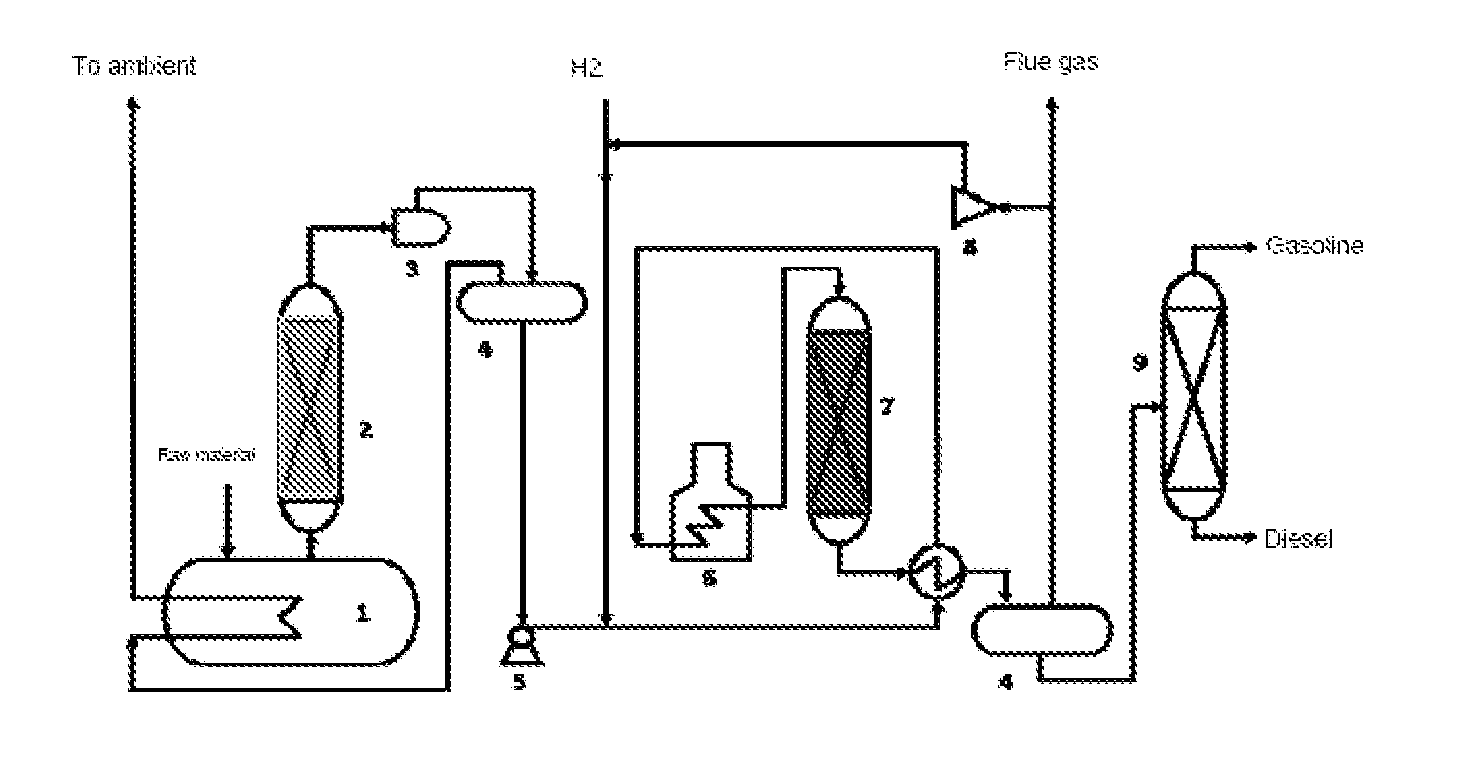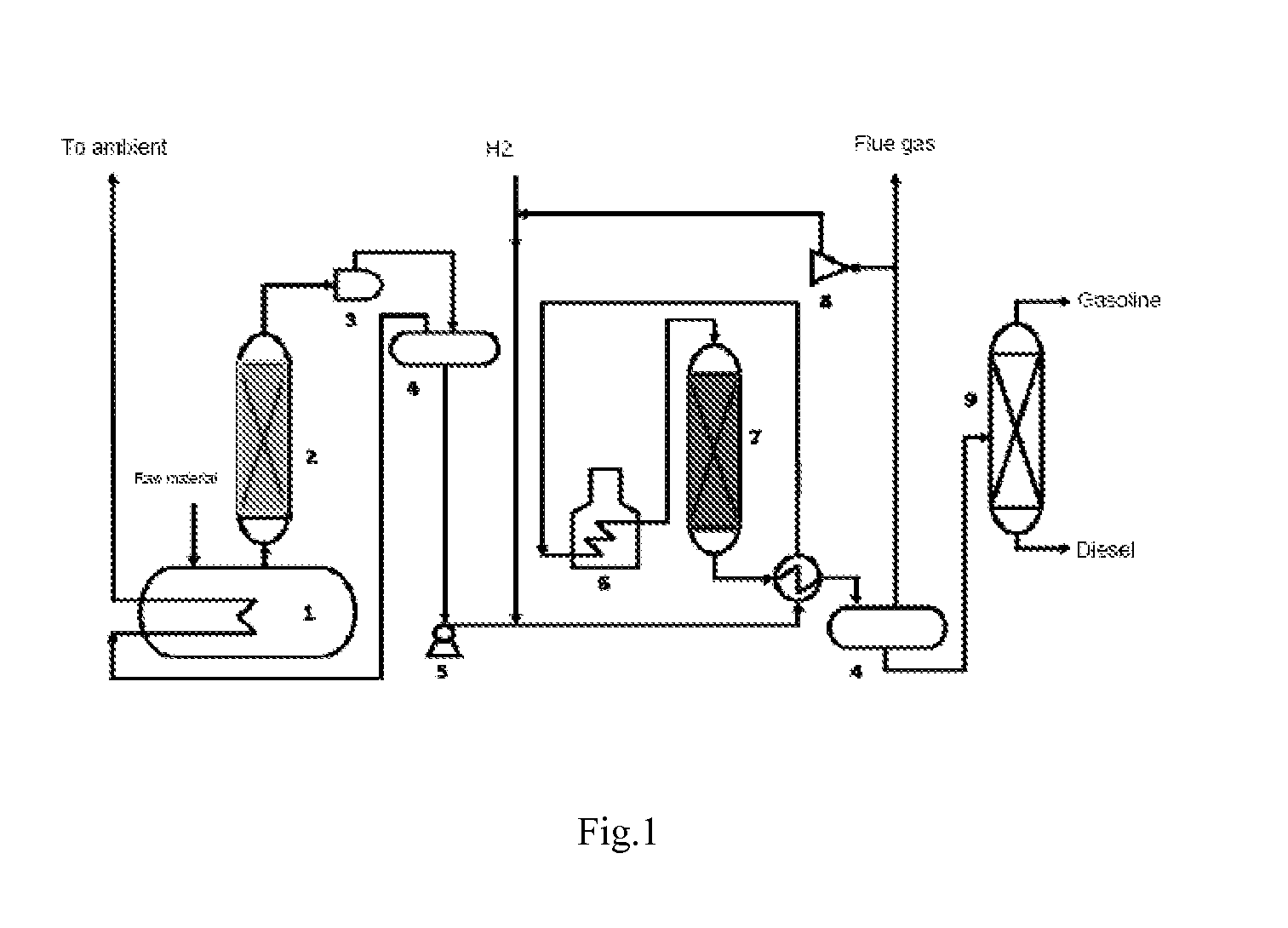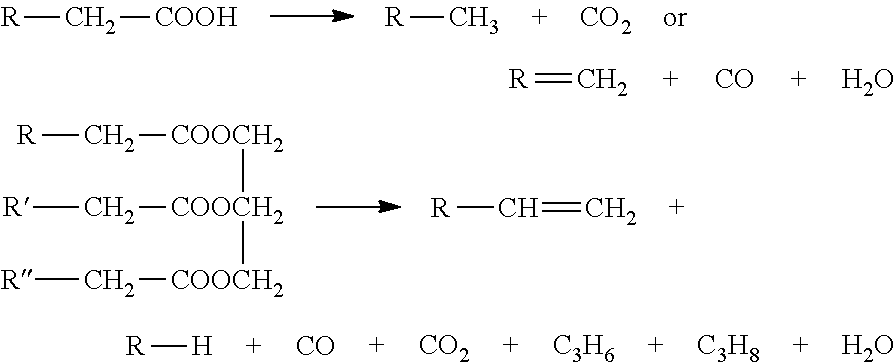Method for preparing fuel by using biological oils and fats
a technology of biological oils and fats, applied in the field of energy technology, can solve the problems of large amount of ethanol consumed, method not environmentally, friendly, economic,
- Summary
- Abstract
- Description
- Claims
- Application Information
AI Technical Summary
Benefits of technology
Problems solved by technology
Method used
Image
Examples
example 1
[0053]Palm acid oil is used as a raw material for the process of the present invention.
[0054]The basic properties, component analysis and distilling range of palm acid oil are shown in Table 1. Palm acid oil is in solid at room temperature, and the content of free fatty acids thereof is up to 67%. As the content of fatty acids is too high, the palm acid oil can not be treated by using the direct hydrogenation process in the prior art (as foregoing mentioned, the prior art only shows hydrocarbon fuel prepared by direct hydrogenating treatments from raw materials which contain 15% free fatty acids at most). However, palm acid oil can be processed according to the present invention.
TABLE 1Basic Characteristic Properties of Palm Acid OilAppearanceBrownMoisture content%(m / m)1.18Density@15.6° C.g / cm30.9285Sulphur contentmg / kgFree fatty acid content%67.1Fat content%98.0Iodine valuegI2 / 100 g51.6Fatty acidDodecanoic acid%11.49compositionHexadecanoic acid%24.97Octadecanoic acid%17.99Oleic aci...
example 2
[0059]Jatropha oil is used as raw material for the process of the present invention. Jatropha oil is in liquid at room temperature, and the basic properties, component analysis and distilling range thereof are shown in Table 5.
TABLE 5Basic Characteristics of Jatropha oilAppearanceYellow transparentMoisture content% (m / m)Density@15.6° C.g / cm30.9193Sulphur contentmg / kgFree fatty acid content%1.9Fat content%99.6Iodine valuegI2 / 100 g103Distilling rangeInitial boiling point° C.405.6Temperature of 50% recovery° C.573.9Temperature of 90% recovery° C.591.7Temperature of 95% recovery° C.593.3Final boiling point° C.603.5
[0060]Jatropha oil is fed into a distillation still to gasify under heating, and then is proceeded with catalytic cracking-deoxygenation in a catalytic distillation tower. The temperature of the distillation still is controlled at 100-600° C. Aluminum oxide-molecular sieve mixture is used as a cracking-deoxygenation catalyst. The ratio of catalyst to the oil is controlled in t...
example 3
[0066]An example for producing clean fuel according to the present invention is provided on a level of application in industry.
[0067]Referring to FIG. 1, raw materials of biological oils and fats are fed into the distillation still 1 and are heated, and then, are guided into the catalytic distillation tower 2, which is equipped with a cracking-deoxygenation catalyst. Cracking-deoxygenation for the biological oils and fats takes place under a certain temperature. The gasoline and diesel fractions thus obtained from the catalytic distillation tower 2 are fed into the hydrorefining reaction reactor 7, in which the gasoline and diesel fractions from the catalytic distillation tower 2 are mixed with hydrogen gas through a feeding pump 5, and then enter into the hydrorefining reaction reactor 7 after being heated by a heat exchanger and the heating furnace 6.
[0068]The hydrodeoxygenation catalyst is equipped in the hydrorefining reaction reactor 7. Under a preset temperature, the fractions...
PUM
| Property | Measurement | Unit |
|---|---|---|
| equivalent diameter | aaaaa | aaaaa |
| diameter | aaaaa | aaaaa |
| mass ratio | aaaaa | aaaaa |
Abstract
Description
Claims
Application Information
 Login to View More
Login to View More - R&D
- Intellectual Property
- Life Sciences
- Materials
- Tech Scout
- Unparalleled Data Quality
- Higher Quality Content
- 60% Fewer Hallucinations
Browse by: Latest US Patents, China's latest patents, Technical Efficacy Thesaurus, Application Domain, Technology Topic, Popular Technical Reports.
© 2025 PatSnap. All rights reserved.Legal|Privacy policy|Modern Slavery Act Transparency Statement|Sitemap|About US| Contact US: help@patsnap.com



